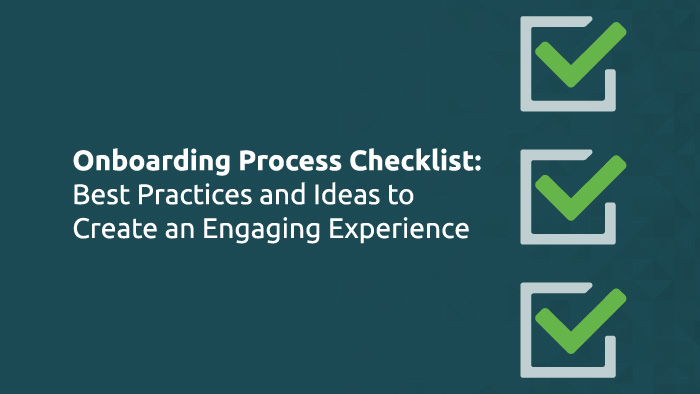By Derek Jones
Nurturing a learning culture in small businesses is just as vital for employee satisfaction and retention as it is for the organization’s success as a whole. Continuous learning and career growth opportunities are two essential factors that drive employee engagement.
According to recent McKinsey insights, fostering this learning culture is what drives businesses forward. And this is particularly the case for small businesses, where adaptability and flexibility in job roles play a huge part in their success.
So, let’s take a closer look at all the ways building a learning culture can boost your small business’s success.
Defining Learning Culture in Business
A learning culture is one where employees are offered and encouraged to partake in continuous learning opportunities that would upgrade their knowledge and benefit the organization’s success.
Sometimes, this can mean upskilling and upgrading the job-related skills for different employee roles. Other times, it can be reskilling your employees and allowing them to learn additional skills and move horizontally within the company and different departments.
Ideally, a learning culture will align the goals of individual employees with the goals of the business. That way, everyone is happy to learn new skills, improve themselves, and then apply those new findings to increase the company’s success.
Benefits of Building a Learning Culture in Small Businesses
Fostering a learning culture can benefit every organization, especially a small business that doesn’t have a big hiring budget or resources for additional staff.
More Flexibility and Reshuffling Possibilities
Teams that particippate in shared learning can take on different roles within a company, and work in a more streamlined and agile way. A small business will often have limited resources for hiring new employees for different positions, so current employees will be able to “wear different hats” and become a true treasure.
According to the 2021 LinkedIn Workplace Learning Report, employees who work in companies with high internal mobility stay with the same employer twice as long. So, instead of being afraid to provide upskilling or reskilling to your employees, start seeing the opportunities of having highly skilled employees in your small business.
Better Employee Engagement and Retention
Unsurprisingly, fostering a learning culture promotes a sense of employee engagement, which, in turn, increases your retention rate.
Nowadays, employees need more than just a stable job. They need the chance to upgrade their knowledge and keep growing in their career. That’s where you, as an employer or an HR manager, come in.
Continuous learning opportunities give employees a sense of fulfillment and growth. To boost this feeling even further, let your employees grow vertically and horizontally within the company. Doing this will bring novelty and improve their engagement, as well as their creative output. As an added benefit, creating career growth opportunities for your employees can be a great retention tool.
For the best results, you could tailor a personalized learning program for each employee based on their aspirations, personality, and preferred learning methods. Remember that L&D programs are not a one-type-fits-all situation.
Effective Onboarding Process
A business with a great learning culture will find it easier to train new hires and help them ramp up faster in understanding their role. This practice is known as onboarding new employees, and it’s crucial for employee retention and productivity.
As an HR manager or L&D professional, tracking the onboarding process to draw measurable conclusions is vital. Doing this will allow you to make onboarding smoother for new hires.
When assessing onboarding, use the many available tools out there to simplify the process. You could implement employee onboarding software or a learning management system to cover every step of integrating new hires. Tools like these make things much easier for your HR team and take tedious administrative tasks off their plate.
For a step-by-step guide on building out your onboarding process, download this onboarding checklist.
Increased Company Success
Continuous learning and development isn’t just a practice that will benefit employees, but it will boost your overall success and productivity. And the reason is simple – every new skill that your employees learn will be implemented in your company.
A learning culture will:
- Boost innovation and new ideas in the company
- Give your small business a competitive edge
- Enable you to reshuffle your workforce when needed
- Make your organization more agile, flexible, and able to adjust to market changes
- Improve your retention rate and save on recruitment costs
- Increase employees’ productivity and the output of the company as a whole
- Improve the problem-solving capacity of the employees and organization
- Ultimately, increase your small business revenue
There are many examples of companies with great L&D programs that thrive by nurturing their learning culture. They’re the perfect example of how this approach benefits your small business.
Help Identify and Address Skill Gaps
A 2021 Gartner HR Research study found that 58% of the workforce will need to learn new skills to continue doing their jobs successfully. Although we once believed that people seek comfort and stability from their jobs, the fast-changing digital world (especially since the COVID-19 pandemic) has brought the need for learning digital skills and new technologies to the forefront of everyone’s minds.
To successfully nurture a learning culture in your small business, your first step should be to identify your employees’ skill gaps and aim to fill them. So, before you think of reskilling, think of upskilling.
Perhaps the most effective way of identifying your employees’ skill gaps is simply asking and having open communication. Often, your employees will tell you exactly which skill they need to perfect or want to work on.
Small businesses often face a lack of resources, especially at the startup stage. However, investing your efforts into nurturing a learning culture can pay off enormously in the long run. When you’re investing in shared learning and the professional development of your employees, you’re investing in your company.
A learning culture doesn’t just mean learning job-related skills, but also personal skills like emotional intelligence and techniques to improve mental health. Even learning how to learn can be a part of your organization’s plan. All in all, nurturing a learning culture should be the basis for every small business and a priority of L&D and HR professionals.
Personalized employee training is the future – and it doesn’t have to be as difficult as it may sound. Check out this infographic for more information on how to personalize employee training.
About Derek Jones
Derek Jones spearheads key initiatives at Deputy, a global workforce management platform for employee scheduling, timesheets, and communication. With a focus on the workforce, he helps business owners and workforce leaders simplify employment law compliance, keep labor costs in line, and build award-winning workplaces. He has more than 16 years’ experience in delivering data-driven sales and marketing strategies to SaaS companies such as MarketSource and Griswold Home Care.


